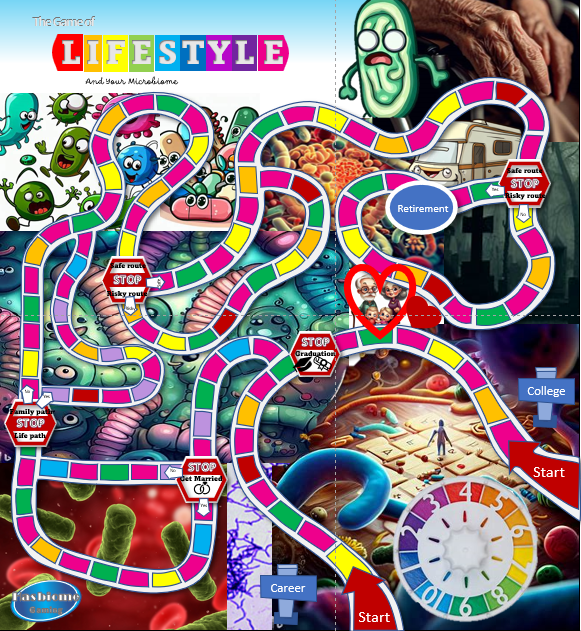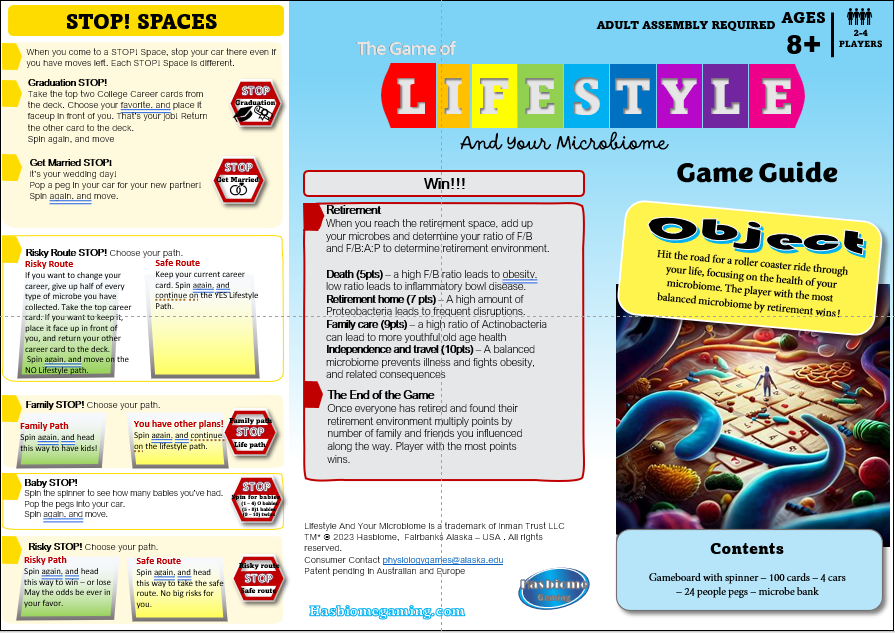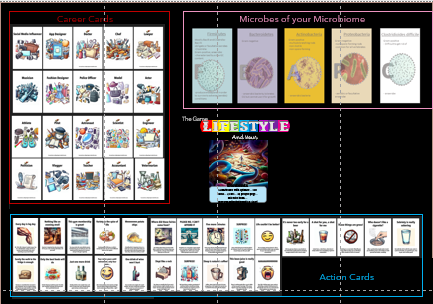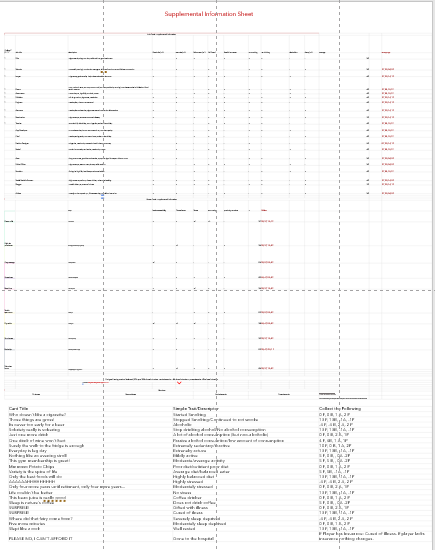For our project we reimagined the game of life! Instead of focusing on earning money and becoming richer than your friends and family, we focused on an equitable life and keeping your gut healthy. A fun game to teach you about the relationship between your symbionts and your lifestyle choices.
Happy Lifestyling – Whitney Inman and Drew Shelton






The Game of Lifestyle and Your Microbiome
Within everyone’s gut, there is a unique microbiome that can affect your health and wellbeing. If this microbiome is not well maintained, a person can become ill or predisposed to many other diseases. There are lots of things that can affect your microbiome, from the food you eat, the amount of exercise, smoking, and further research has found effects from birthing methods and your home environment. However, you do not know how your microbiome will be affected until the damage has already been made. In order to highlight these effects, the authors used the game of life. Different decisions you make in the game will influence the balance of the microbiome. Certain decisions will affect the number of Firmicutes, Bacteroidetes, Actinobacteria, and Proteobacteria that are in the gut. The gut is composed of a large variety of organisms, however, they have been limited to 4 groups to simplify the effects. Based on the composition collected, the players will be awarded points to determine a winner. This helps to highlight the complexity of the microbiome and how little changes can have lasting effects and highlights the symbiotic relationship that the organisms have with their host.
The human gut houses a unique microbiome that plays a crucial role in maintaining good health and overall well-being. Neglecting to care for this microbiome can lead to illness and predispose an individual to various diseases. Several factors, such as dietary choices, physical activity levels, smoking habits, birthing methods, and living conditions, can all impact the microbiome. Unfortunately, it’s impossible to predict precisely how one’s microbiome will respond to these factors until the damage is already done. To illustrate these effects, the authors used the game of life. By making different choices in the game, players can influence the microbiome’s balance. While the gut contains a vast array of organisms, the game simplifies them into four groups to demonstrate the effects more clearly including, Firmicutes, Bacteroidetes, Actinobacteria, and Proteobacteria. Players receive points based on the composition of bacteria they achieve, determining the winner with the healthiest gut microbiome. This activity underscores the complexity of the microbiome and how even small changes can have lasting effects. It also highlights the mutualistic relationship that exists between the microbiome and the host.